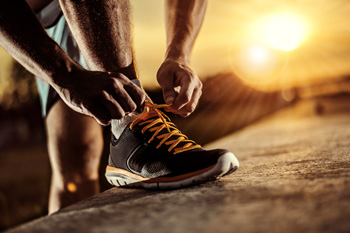
Proper footwear plays a significant role in maintaining physical well-being, particularly for individuals who lead active lifestyles. Whether you’re an athlete or a fitness enthusiast, wearing the proper footwear can contribute to reducing the likelihood of injuries. Here’s more on the concept of sports injuries and how correctly chosen footwear can act as a preventive measure:
Sports Injuries
Sports injuries commonly occur during physical activities such as running, playing sports, or weightlifting. Unlike other injuries caused by accidents or general wear and tear, sports injuries are often linked to specific movements or repetitive activities associated with athletic endeavors. While injuries vary in severity, prevention techniques such as strengthening exercises, proper preparation, and wearing suitable footwear can often reduce the risk.
Injuries from sports can result from various factors, including overtraining, improper movements, or even ill-fitted equipment. The wear and tear on muscles and joints increases in sports or exercises that involve running, jumping, or rapid direction changes. Such movements tend to place extreme stress on the feet and ankles, making them especially vulnerable.
Causes and Types of Injuries
Sports injuries are typically the result of overuse, poor biomechanics, or inadequate preparation before activities. Sprains and strains can result from overstretching or tearing ligaments and muscles. Stress fractures are tiny cracks in bones due to repetitive force, often seen in runners. Tendonitis may result from inflammation in tendons caused by repetitive motions. Some other common types of sports injuries include:
- Concussions
- Contusions
- Dislocations
Treatment and Rehabilitation
Treating sports injuries often involves a well-planned rehabilitation program. Physical therapists and sports medicine professionals may focus on improving strength, flexibility, and movement mechanics. Preventive measures, such as shoe adjustments that support corrective biomechanics, also play a large part in long-term injury management strategies.
Proper Footwear
The type of shoe you wear influences your posture, alignment, and weight distribution, making proper footwear invaluable for exercising. Wearing shoes that lack proper support, cushioning, or grip can strain your feet, ankles, and legs, which increases the likelihood of injury. The right pair of sports shoes should accommodate the specific demands of your chosen activity, such as:
- Arch Support: Shoes with proper arch support reduce the pressure on certain parts of the foot. This alleviates discomfort while protecting against overuse injuries such as plantar fasciitis.
- Cushioning and Absorption: High-quality midsoles absorb shock during impact, reducing stress on joints during high-impact activities like running or jumping.
- Stability Features: Footwear with adequate grip and ankle support helps reduce the risk of slips and twists, making it suitable for activities that require sudden changes in direction.
When to Replace Your Shoes
Matching footwear to your activity minimizes unnecessary strain on your body and contributes to safe performance, but even the best footwear doesn’t last forever. Shoes lose stability and cushioning over time. Most experts recommend replacing athletic shoes frequently or when wear patterns appear uneven.
Decrease Chances of Sports Injuries
The connection between proper footwear and injury prevention reinforces the need to choose shoes that align with your physical activities. Whether you’re hitting the gym, running a marathon, or simply walking the dog, well-fitted shoes with adequate support and cushioning can significantly reduce injury risks. Explore additional resources from podiatrists for more tips on optimizing your physical wellness.
RECOMMENDED ARTICLES
How Cool Sculpting Can Help Target Stubborn Fat Areas
How Body Imaging Detects Early Stages of Organ Diseases
How to Stay Healthy During Pregnancy and Keep Both You and Your Baby Safe
Preventive Cardiology: Simple Steps for Keeping Your Heart Healthy



